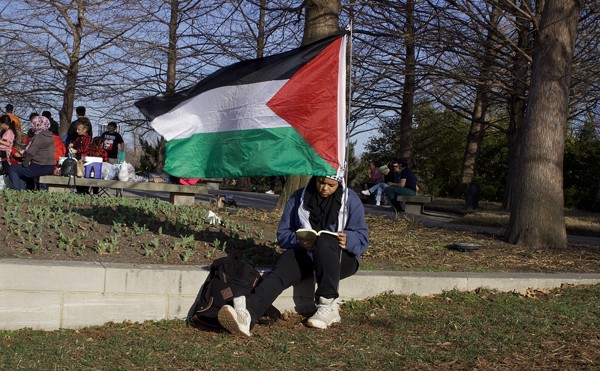When Patrick Horine moved back to St. Louis from San Francisco a few years ago, he and his wife noticed something was missing in their Tower Grove South neighborhood: fresh produce.
They shopped for produce at the Soulard Market, he says, but it was difficult to determine which of the bounty was local and which was shipped in from parts unknown. "We knew that the neighborhood was ready for a market, and we knew that the residents were there to support it," says Horine.
Over the past winter, they began planning to open their own farmer's market in Tower Grove Park. Although the idea sparked enthusiasm among their neighbors, they soon discovered it didn't sit well with many of the farmers they invited to participate.
"The response was mixed," says Horine. "Some were immediately interested, but about half said that they didn't think we'd be able to pull it off."
One of those farmers was Paul Krautmann of Bellew's Creek Farm. When Horine called Krautmann, who grows sweet potatoes, winter squash, garlic and chipotle peppers on 10 of his 65 acres, the farmer didn't mince words. "I laid it out, brass knuckles," recalls Krautmann. "I said, 'Good luck, honest to peas, and I hope it succeeds, but I think you're going to have a hard time filling booths and finding competent farmers.'"
Sam Hilmer of Claverach Farms told Horine he was committed to the GreenMarket, which was birthed last year four miles away in the Central West End. Hilmer, known for his microgreens, suggested Horine aim for a weekday market. Aside from the Maplewood Farmer's Market, which sets up shop in the parking lot of Schlafly Bottleworks each Wednesday, the rest of the week was wide open.
"He didn't really heed my advice," says Hilmer. "He was set on the idea of a Saturday market before he talked to any of the farmers, and before he knew whether it was realistic."
Over the past decade, farmer's markets have been cropping up all over. According to the Missouri Department of Agriculture, there were 52 markets in the state in 1997. By last year that number had more than doubled. Between 2004 and 2005 alone, the state saw fifteen new markets added.
The growth, in St. Louis and nationwide, has been fueled by an increasing desire for locally grown produce.
"Typically, the foods we find in the store have traveled over 1,500 miles," explains Allan Benjamin, business development specialist for the Department of Agriculture. "Consumers want local foods. They want to know who's growing their foods. They want to go out and talk with that farmer and get to know them, and farmer's markets are the ideal place to do that."
Says Julie Ridlon, market master of the Clayton Farmer's Market: "Every city wants their own little market. I was approached by four different cities this past year to open up a market."
The problem in St. Louis, explains Julia Feder, market master of GreenMarket, is that there aren't enough farmers to go around. "In a 120-mile radius, I'm guessing that there are no more than 15 produce farmers" interested in working the markets, she says.
"For a community of two and a half million people," explains Brett Palmier of Biver Farms in Edwardsville, "there's nowhere near enough production going on."
"It's a small pool of farmers who are spread thin over a number of markets," adds Sam Hilmer, "and it's diluting them all. As a result, you've got a bunch of half-assed markets. People go there and say, 'Where's the produce?'"
The problem isn't limited to St. Louis, says Vance Corum, who organized some of the first successful markets in Southern California. "The same argument has taken place in Southern California in the LA basin, where I started farmer's markets in 1979. We heard all the time different areas with existing markets complaining about new markets coming online, and sometimes they'd be three, four, five miles apart."
So far, including meat and cheese purveyors, only thirteen farmers are hauling their produce to the Tower Grove Market — although not all of them have committed to selling every week. Horine hopes to have eighteen by July. By comparison, Soulard Market has 93 food vendors, 44 of whom are produce resellers; 22 are growers. The six-year-old Clayton market, in peak season, will have 33 food vendors; and the GreenMarket has increased its vendor population to 17. The Maplewood Farmer's Market has 10 growers.
Compounding the problem in the St. Louis area is a lack of coordination among the farmers themselves. With each new market, growers individually decide whether to commit. Farmers in many other regions are much more organized, says Jack Gerten, manager of the St. Paul Growers Association, a collective of 160 farmers that governs the farmer's markets in St. Paul, Minnesota.
In the St. Paul area, the growers control their markets. If they decide that a neighborhood isn't ready for a market or that it will dilute demand, the farmers simply decline to participate. The association operates a main market in downtown St. Paul and eighteen satellite locations.
"It gives us a strength," explains Gerten. "We have a membership fee, which provides us the money to promote the markets. If you're doing it individually, you just can't afford to do anything except just sit there with a sign on the street and hope that people will give you some free [word-of-mouth] advertising."
With a solid organization and careful foresight, adds Gerten, comes variety and a strong customer base. "Otherwise, with gas the way it is, you ended up running to five or six little markets all over, and selling a little bit at each one. You're spending too much time trying to make a hundred bucks here and a hundred bucks there."
But Brett Palmier says unity won't serve the public if there aren't enough local farmers: "You need nine players to field a baseball team."
Palmier and Keith Biver of Biver Farms load up three vans every Saturday and drive to St. Louis, where they sell their produce at three markets, including the Tower Grove Market. These Saturday forays make or break their week. "Unfortunately for us, a whole week's work is really useless until Saturday morning. What happens on Saturday morning determines whether we've wasted a whole week's work."
It's not the ideal situation, adds Palmier. "But if that's what it takes for us to sell our product at close to a retail value — which is really essential on our scale — then that's what we'll have to do."
He and many other small farmers do not sell at the city-owned Soulard Market, the granddaddy of St. Louis markets, founded in 1838. The majority of stalls, says Keith Biver, are rented by brokers who simply purchase their goods on produce row and sell at a cheaper price than he can afford to.
"We couldn't get the price [at Soulard] we could at the other markets," he explains. "People go there looking for a bargain. Smaller farmers need to get the best price they can get, and it takes a long time to get everything harvested."
Soulard Market's mission, however, is to serve a much broader demographic than the wealthy gourmands in search of boutique vegetables. Explains Sandra Zak, Soulard's market director: "Soulard is a public gathering place to embrace the ethnic and cultural diversity of the region. We're not just about food, and we know that. We take a broader view."
Soulard draws a more varied economic base and appeals to lower-income customers searching for a deal — not the kind of patrons who will make ends meet for the typical small grower, says Hilmer. "In relation to the kind of farm we are, we need the foodies to buy from us. We're not going to sell heads of lettuce from California for 50 cents. Everything comes from the ground on my land. I need to make $1,500 on a Saturday for it to work for me."
Hilmer is hoping that the GreenMarket will become the hub for the local growers, although he wishes the Tower Grove Market luck. "We need one vibrant market, one that will support a level of density — enough people who are going to spend X amount of dollars to make it viable for everyone."





